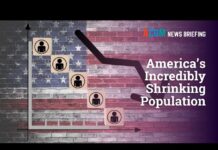Vidya Sethuraman
India Post News Service
Student debt is the second largest form of consumer credit, next to mortgages, and today, more than 45 million people owe nearly $1.7 trillion. Every 26 seconds one of those student loan borrowers defaults on their loan.
The effect is not just that people can spend their whole lives deeply in debt, sometimes into old age, but that it generates further economic, gender, and racial inequality in our society. Over the last few years, the Biden Administration has tried to ease and expand on student debt forgiveness programs launched under the Obama administration, achieving some success in the process, but continuously facing legal challenges from Republican states that have halted an extensive program unveiled in 2021 and threaten to do the same with one released last year.
In the meantime, borrowers still have options if they are low-income, have paid up for a decade or two, or have worked on public service jobs, but the loan-servicing panorama is complex and plagued by lax regulations and bad actors. A panel of experts explained what programs are still on the books, which ones have been stopped or threatened, and the future avenues for college affordability and equity. Experts suggested that there are two main reasons for the current crisis. One is the increase in tuition fees, and the other is the increase in the proportion of tuition fees that students and families need to pay.
Adam Minsky, student loan lawyer and author, said in June 2023, the Supreme Court ruled 6-3 that the massive $400 billion student loan forgiveness plan that the Biden administration was trying to implement violated the law, and the plan was shelved. In addition, the federal income-based repayment (IDR) requires borrowers to have their remaining student loans forgiven after 20 or 25 years of payment. There is also the Public Service Loan Forgiveness Program (PSLF), which allows borrowers to have their student loan balance forgiven after 10 years of service in government agencies or non-profit organizations.
The latest student loan forgiveness plan is the Savings on a Valuable Education Plan (SAVE Plan). Under this plan, borrowers repay their student loans every month based on their income and family size. If the loan amount is less than $12,000, the balance will be forgiven after 10 years of monthly repayment of the student loan. Regarding this plan, Michele Shepard Zampini said that rather than a student loan forgiveness plan; it is a plan that can make student loans repayable better. Under this policy, the monthly repayment of student loans will be reduced, which can make students more repayable. The applicant’s loan repayment plan is back on track.
Michele Shepard Zampini, TICAS Senior Director of College Affordability, a non-profit organization that advocates equal access to school, said that college tuition has increased significantly in recent years, coupled with the original government-subsidized tuition. The portion has been reduced and an increasing portion has been borne by students and families, leading Americans to gradually fall into a student loan crisis. She said that it is necessary to strengthen the supervision of the university’s use of funds so that the federal and state government loans received by the university can be fully utilized.
Virginia Brown, a mental health counselor and social worker who just retired and was able to move closer to her family thanks to debt forgiveness. Beginning with the Obama administration, the federal government has launched various student loan forgiveness programs.
Although these programs have been effective, many of them have been interrupted by legal challenges from all walks of life, and the student loan forgiveness program has also confused many people because of the lack of detailed policy explanations and personnel assistance.
She is a first-generation immigrant. When she came to the United States, her son was five years old. At that time, in order to have a better family life, she mustered up the courage to return to school and study psychological counseling. She attended a private university at the time and started over from the undergraduate level.
Unable to afford the expensive tuition, Virginia Brown had to apply for the federal student loan program. However, after graduation, even though she repaid her student loan every month, the interest on it continued to increase, eventually resulting in a debt of $100,000. She finally qualified for student loan forgiveness in mid-2021. But before that, in order to qualify for the exemption program, she had to work in a non-profit organization and engage in public service, which in turn resulted in a lower salary and an inability to pay her student loans.
Also Read: College enrollment drops; Student debt grows: Will debt cancellation help?






